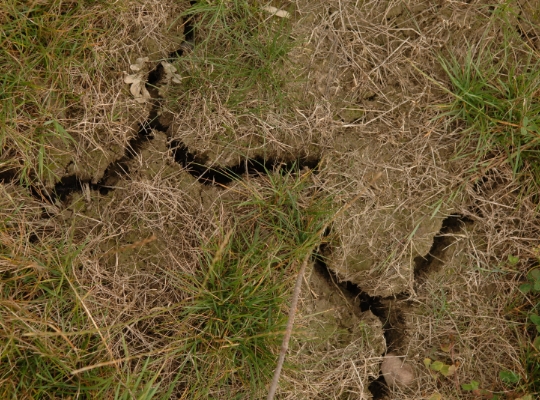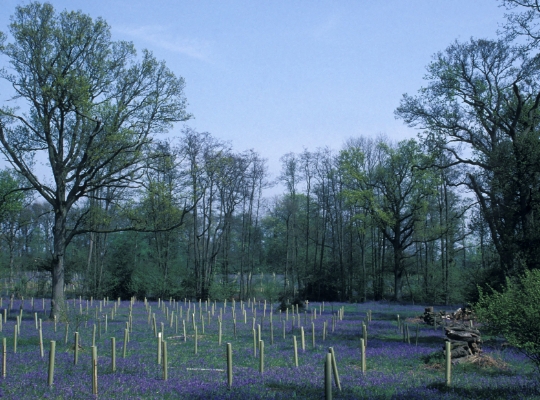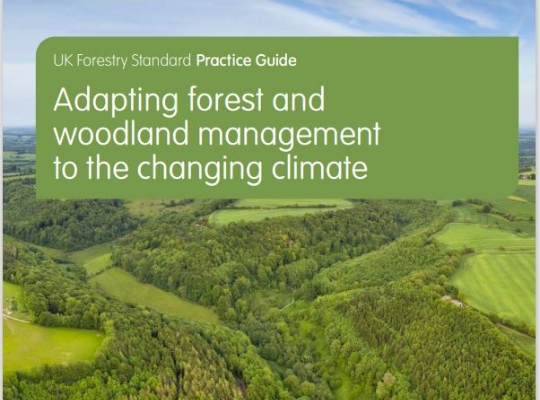If you’ve recently taken ownership of a woodland and/or are new to the forestry sector, we have collated resources to help you navigate the topic of the impact of the changing climate on woodlands and their management.
Due to the changing climate and weather patterns and the increase in pests and diseases, pro-active management of your woodland is important to improve its resilience.
Resilience is described as ‘the ability to absorb disturbances while retaining the same basic structure and ways of functioning and the capacity to adapt to stress and change’. (Source: UKFS Practice Guide Adapting forest and woodland management to the changing climate’).
Leaving woodland to change and assume that it will adapt to changing environmental conditions while still functioning and providing the present benefits is not necessarily an option due to the acceleration of climate change-related risks that are occurring. This includes rising temperatures, drought, storm damage, flooding and pest and disease outbreaks.
In many areas the pace of these changes is faster than our woodlands’ ability to adapt without changes to its functioning, and without intervention they can be vulnerable to significant damage.
Therefore, in order to keep woodlands healthy and resilient to these risks, they need to be managed accordingly and this will be influenced by owners’ objectives, for example for woodland conservation, to create a haven for wildlife and encourage biodiversity, and/or to produce timber etc. There is no single set of guidelines to follow for the changing climate, and managers and owners will need to select the right strategies for their site(s).


Understanding the impact of the changing climate on forestry needs consideration of both adaptation and mitigation requirements and challenges.
The global effort to reduce carbon emissions has led to a surge of UK initiatives to plant more trees to remove CO2 from the atmosphere and store it in trees, wood and soil (known as carbon sequestration). Tree planting and woodland creation are therefore important climate change mitigation strategies.
However, it is not enough to simply plant more trees. We need to ensure new woodland will be resilient in the future and we need to ensure that resilience for our existing woodland, so that it continues to deliver benefits to the environment, society and the economy. The measures we take to change how we manage our woodland is referred to as adaptation. This is an ongoing practice, and so it is important to monitor our woodlands so we can continue to adapt our management.
Mitigation and adaptation strategies need to be considered alongside each other to help reduce the effects of climate change. The Climate Change Hub currently focuses on UKFS-approved adaptation guidance, and further content about mitigation will be added over time.
The UK Forestry Standard (UKFS) is the reference standard for sustainable forest management across the UK, setting out the approach of UK governments by defining legal requirements, good forestry practice requirements and guidelines. It applies to all UK woodland, regardless of who owns and manages it. The UKFS advocates a risk-based approach to adaptation to help minimise negative impacts of the changing climate on tree growth and productivity.
The advice and guidance provided on the Climate Change Hub with regard to risks and adaptation measures is taken from the UKFS Practice Guide ‘Adapting forest and woodland management to the changing climate’
Printed copies are available to purchase from Forest Research.
"*" indicates required fields
Forestry is devolved in the UK, meaning that England, Scotland, Wales and Northern Ireland each have their own policies and priorities for woodland creation and management. See our official country guidance pages for further information.

Helping to create more resilient woodland to help reduce the effects of climate change may feel a daunting task. As each site has different conditions and objectives, and uncertainty about the future conditions, there is no exact recipe to follow. Our understanding of climate change adaptation continues to develop, thanks in part to the important collaborations taking part between the scientific community and woodland managers, and we urge you to bookmark this website and check back for important news and updates.
Our take action page will help direct you to different resources including the new 5-step Adaptation Framework which is flexible enough to be used for woodland sites of all sizes and complexity.
You may find it useful to locate your local Woodland Officer or get in touch with a national organisation for woodland owners that provides advice, training and networking opportunities. These include:
The 2015 Forestry Commission guide entitled ‘So, you own a woodland?’ is now only available online on the Royal Forestry Society website. While it does not include specific advice on climate change, it’s an excellent starting point for new woodland owners with guidance on the following topics: